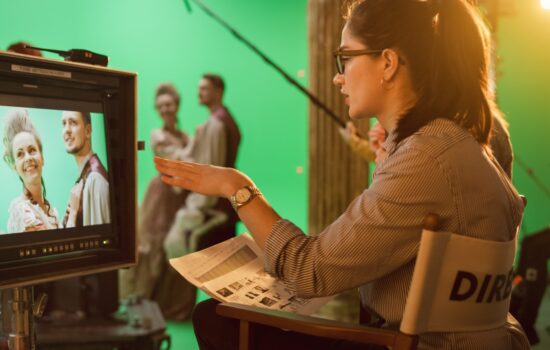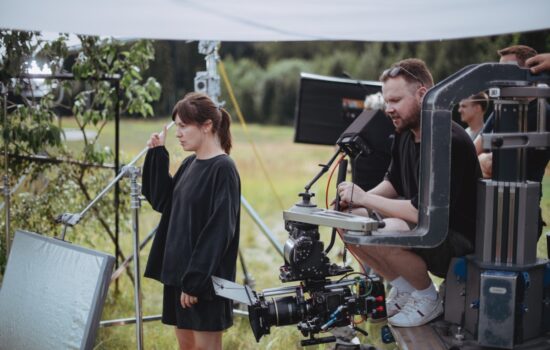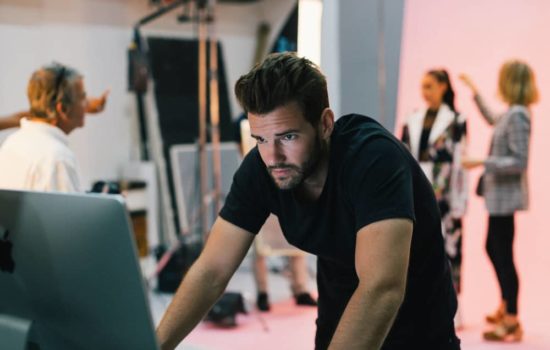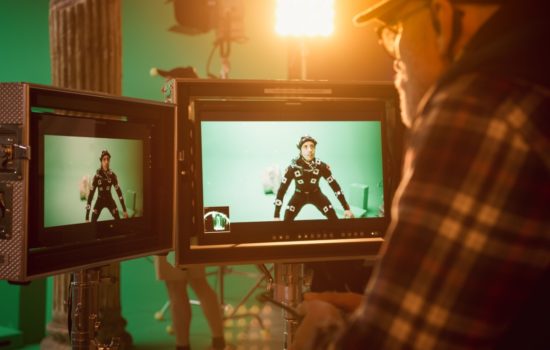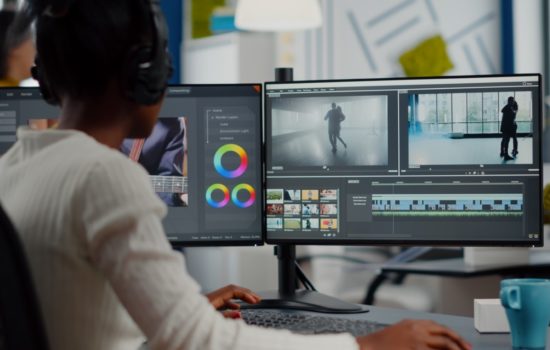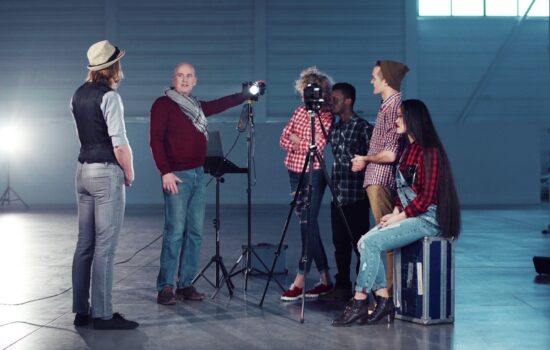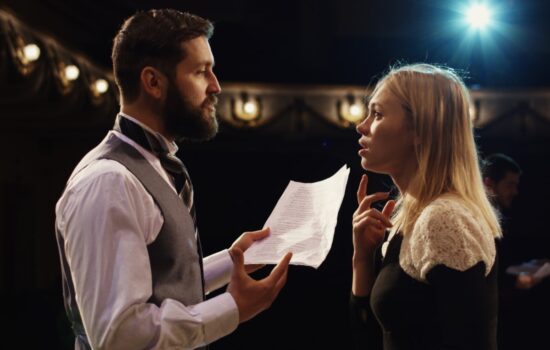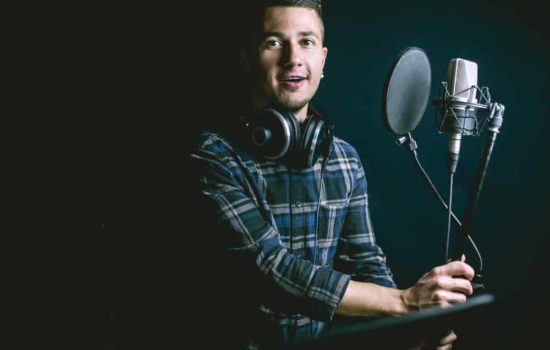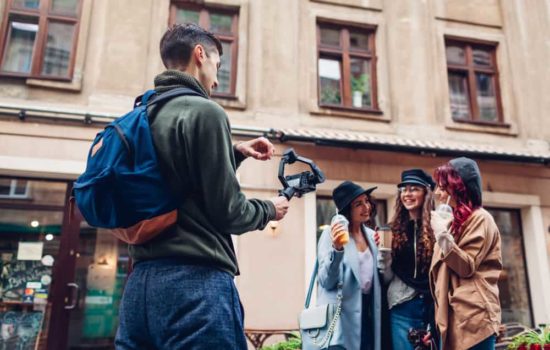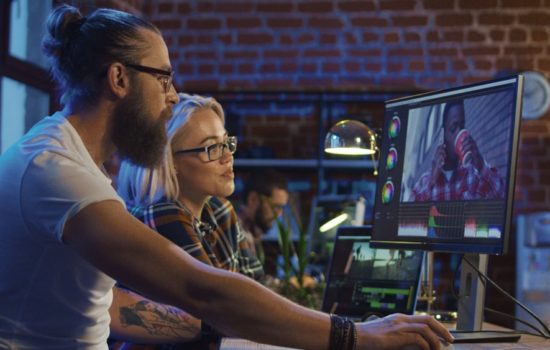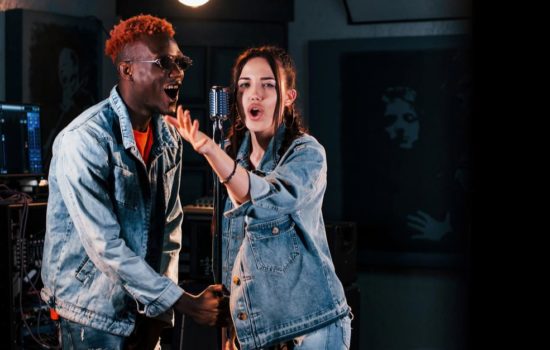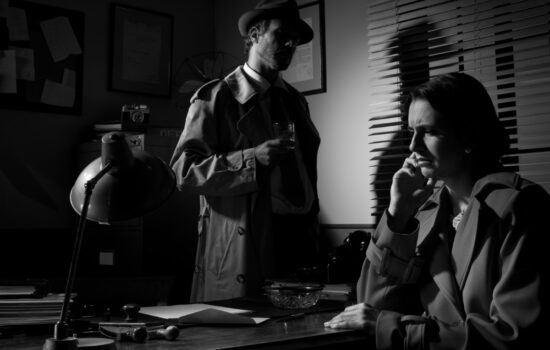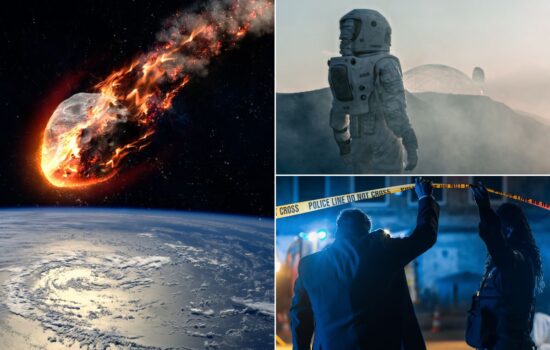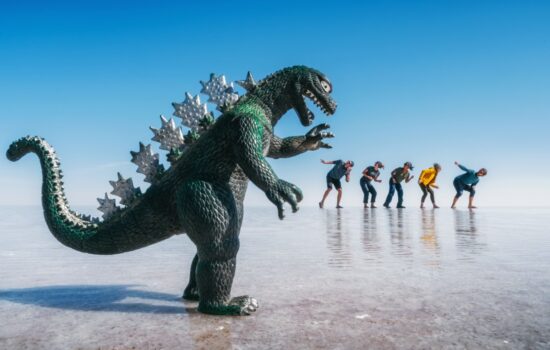Director of Photography
Career Overview
The Director of Photography or DP works with a Director to execute their vision for the script. They are in charge of both Camera and Lighting Departments, creating the visuals that help tell the story.
Alternate Titles
Cinematographer, DP, DOP
Avg. Salary
$65,0001
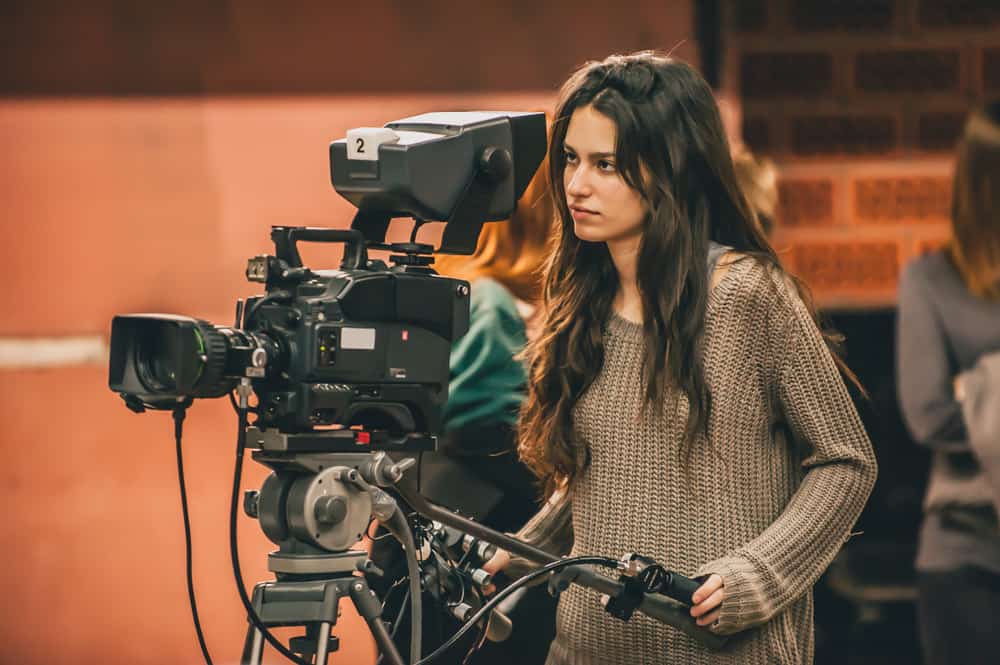
How To Become a Director of Photography
People also ask
- What is the role of the Director of Photography?
- How does a Director of Photography get paid?
- How does collaboration work between a Director of Photography and a Film Director?
- What’s the difference between shooting on film and shooting on digital?
- Who comprises a Director of Photography’s team?
- How many years does it take to become a Director of Photography?
Career Description
A Director of Photography (or Cinematographer) is responsible for crafting the visual language of a film through lighting, camera angles, camera movement, camera framing, and lens choices.
Working with the Director, they create the look and style of the film. In this role, the Director of Photography leads the Camera and Lighting Departments, (Drone Operators and Drone Pilots sometimes) which operate under their purview. Because of these responsibilities, a DP must understand both the creative and technical sensibilities that go into filming a movie, TV show, or other type of content.
The DP’s job begins prior to principal photography. During pre-production, they’ll discuss the Director’s vision for the film, aid in the creation of storyboards and shot lists for production, and begin making their camera and other equipment selections.
Once principal photography is completed, the DP may still be looked to for instruction and guidance as the film is cut together and color correction is applied to it.
To learn about what it takes to become a Director of Photography, we spoke to the following DPs:
- Paul Hughen (WandaVision, Avengers: Infinity War, Avengers: Endgame)
- Polly Morgan (A Quiet Place Part II, Legion, American Horror Story)
- Chris Seager (Carnival Row, Watchmen, Six Minutes to Midnight)
What is the role of the Director of Photography?
The Director of Photography is very instrumental in helping the Film Director establish the look of the film. During the prep period (before filming) the Director and DP sit and discuss the best approach for the “look” of the movie, the commercial, or television program they are about to start.
Sometimes it might be that they decide they want their project to look like Blade Runner. They would view the film together and discuss the aesthetic approach to shooting a project similar in texture and feel. They also might look at photographs in books to discuss a look that both of them appreciate and relate to. That way they are both on the same page when it comes to technique and style.
While the Director works with the Actors, the Director of Photography during shooting works with the crew to place camera, lights, and anything else that helps the photography. Sometimes on a small project, there might be 20 crew members that the DP gets to work and communicate with. On Infinity War and Endgame I was working with 250-400 crew members in several different departments on a daily basis.
The DP sets the shots with the Director and the Camera Operator. He then lights the set and sits with the Director to discuss how things are perfect or how they can make shots or set-ups better. During post-production, after filming is complete, at some point the DP will usually arrive at a post house to do a Digital Intermediate or DI.
That is the coloring and finalizing of the show. Whether it is a commercial, TV show, or a feature the Cameraman sets the look of the film and he will follow through with the timing (DI) of the project before release. This can take several days or several weeks depending on the size of the project.
The Director of Photography’s job is to help express the story in visual terms. Everything comes back to story. The story and script inform the visual language: what genre are you working in? Is it a romantic comedy, is it a genre horror film, is it a drama? We can all imagine how those types of films look.
With a very visual Director, you can just set up the camera and be told what lenses to use. Conversely, you can be working with a Director who has come from a theatre or writing background and you have to lead the way in terms of the visuals for the production. It can fall at either end of the spectrum or anywhere in the middle. When they don’t [have a clear idea of visuals], it’s a team exploration to find the look and feel that helps the viewer understand the story in the most effective visual way.
In the early days, you spend time understanding the story, the arc of the characters and what the Director is trying to say. We have a lot of conversations about story, theme, characters. We try and get into the Director’s head to get a feel for what it is they want the audience to feel.
Once you’ve had all those conversations, you start to look at visual references together–are there any films that have a similar feel or are there artists and Photographers that invoke something that might be relevant to the story we’re telling?
After that, it’s about lighting and camera movement–what movement is most relevant to the production? Is it handheld or do we need more graceful, sweeping moves that might employ a crane? Still, the conversation is grounded in how best to tell the story in visual terms.
[Next] it’s crewing up, getting equipment together and figuring out what you’re going to need to pull off the look you’ve chosen. If you’re working on a big studio movie, your department heads (Gaffers, Key Grips) might come in a month or more prior to camera roll.
Nowadays, because there are so many visual effects, we have something called “pre-visualization” where the visual effects company will actually work with the Director and Cinematographer to do a rough CG build of certain scenes. Films like Gravity use this a lot so they can see what the camera angles will be, where the earth will be, where the light is coming from, those types of things.
If you’re working on an independent movie, it’s a lot smaller and there’s a lot less money–department heads will probably just join for the tech scout and you won’t get much prep time with them. Saying that, with smaller budget films, I get behind the camera more which I absolutely love!
Working in production is tiring and there’s a lot of pressure involved, so you really need to get on well with the people you’re working with. I make sure we’re on the same page because it’s like going into battle together — you need to be there to support each other and collaborate.
You do rely a lot on the people around you to help meet the deadlines. It’s important to respect people at work and give them the space to do their job.
When I choose a project, I’m not only choosing a story that speaks to me, I’m choosing the person I’m going to be working with. There has to be a connection.
A simple explanation is that the Director of Photography’s main role is to visualize and enable the words and thoughts of the Director and of his script. It is in reality, much more complex than that. The Director of Photography in conjunction with his Director can contribute to the “look” of the movie by offering his own visual input of the script.
The DP [Director of Photography] will work closely in collaboration with the Production Designer and other HoDs [Heads of Departments], like Costume, Hair/Make Up Designers, Visual Effects, and Stunts to name a few.
The DP will also have the responsibility along with their input of his own Camera, Grip, and Electric teams. These guys will help enable the views/aspirations of the DP and his artistic interpretations on the “set” by setting and operating cameras, cranes, dollies, and lights.
Salary
The salary range for a Director of Photography working on a studio feature can fall anywhere between $5,000 and $30,000 a week.
However, Directors of Photography who work on studio-backed films in a given year comprise a fraction of total working DPs across all mediums. As such, the average annual salary for a DP is around $65,000.
The daily rate of pay for Directors of Photography varies greatly because of several factors, including the type of production, experience of the DP, and whether or not that DP is part of a union such as the International Cinematographers Guild, or IATSE Local 600, which will establish a base rate for its members.
Many emerging DPs may work for a nominal fee at the beginning of their careers. Especially if they start out in student or short films, their daily rate might be as low as a few hundred dollars. If they are trying to build their body of work, they might even work for free.
DPs who are a bit more established, such as those who shoot commercials or music videos, may earn a daily rate of up to $1,500. Once a DP comes on board higher-profile projects like a TV show or a feature film, they can then earn higher daily rates. For such professionals, a daily rate of $3,500 or more is not unusual.
How does a Director of Photography get paid?
If you’re on a commercial or music video or short, you are paid per day.
On TV and movies, you get paid on a weekly basis. Bear in mind, you do get paid a little less for prep than you do on shoot.
[There used to be a “quote system” in place where a Director of Photography would expect to earn the same or more than their previous production.] The quote system has practically disappeared so you just negotiate your quote on a per-production basis–it’s dependent on whether it’s a studio or indie project.
Hey, what do you think about trying our new Film Career HelperFilm Career Helper really quick? It’s totally free and could help get your career moving fast! Give it a try. It’s totally free and you have nothing to lose.
Career Outlook
While most people look to the Director as the most important person on a film or other type of entertainment, the truth is that a great DP can have as much influence on that piece of content.
For this reason, those seeking to become a Director of Photography can reach incredible levels of career success. That being said, to gain that success, they must understand how to master the moving image, which takes both technical and creative expertise.
To gain that comprehensive understanding of both how an image is formed and how it can achieve a desired emotional impact, many aspiring DPs begin their careers with some type of formal training such as film school or photography school.
While it may take several years for them to become proficient, ultimately it can be to an emerging DP’s benefit, as they can more quickly establish a daily rate for themselves on account of their education. Given that a formal education also affords emerging DPs the chance to work on a number of student films, this too can help them hit the ground running after graduation.
From there, it’s often a matter of continuing to both nurture their professional relationships and develop their skills that will help young DPs build on their foundation of success and be asked to shoot bigger and more complex productions.
With these higher-profile projects, DPs will invariably be paid more as well. Depending on the career aspirations of a DP, some will go on to shoot acclaimed films or TV shows or even transition into the Director’s role.
As with virtually every other specialty in the entertainment field, the success of a DP relies on a combination of their work ethic, ability to form and maintain professional connections, and the mastering of multiple skillsets.
What is the lifestyle of a Director of Photography like?
I travel all around the world and shoot in all kinds of places. If you want to do this job, be prepared to be nomadic because production happens everywhere.
Once you start having a family, it can become extremely complicated, so you have to be able to roll with the punches and be a bit of an adventurer. Things are never really going to be settled–it moves quickly and you don’t know what’s around the next corner. Really, it’s about relinquishing control. [Because this role is self-employed, there’s no sick pay, no maternity leave and often no health insurance provided.]
Self-care is important. The life can get intense with lack of sleep and long hours. It’s important to take care of yourself; at the end of the day, it’s just work and you have to be able to step outside of it and have some life of your own. It can be all-encompassing.
Sometimes you’ll work a lot and then you might not work for six months so you have to manage your money and not spend it all at once. It’s not a settled lifestyle, so think about that.
How does collaboration work between a Director of Photography and a Film Director?
A number of components go into a creative collaboration between a Director of Photography and a Film Director. This partnership is fundamental to the success of any project, as it bridges the director’s creative vision with the technical expertise of the Director of Photography. Ultimately, success relies on communication and an agreement of the film’s creative vision.
Collaboration between these two creative heads starts with a like-mindedness. While the director is the visionary for the project guiding both the emotional and narrative arcs for the film, the Director of Photography is the visual architect, executing the director’s vision into a tangible, cinematic rendering. The early stages of all film productions involve intensive discussions about the director’s vision, thematic elements, and the emotional tone they’re looking to convey with their movie.
Often, the director has visual references that they’ve either drawn themselves or pulled from other films or works of art. It’s the Director of Photography’s job to extrapolate on these ideas, and figure out how to translate them into a reality for the film they’re working on. This includes technical aspects like framing, camera movement, and lighting. It’s vital that the Director of Photography and film director see eye-to-eye in these meetings, as they’ll eventually come to establish the cinematic vocabulary the film will use.
During production, this collaboration continues. The director and DP work together to figure out camera placement and movement as well as block scenes. With an understanding of what the director is looking for, the Director of Photography uses their knowledge of lenses and lighting to create the director’s desired visual aesthetic. The process is often revised and altered until all involved parties are satisfied they’re creating the film’s intended look. While the director guides the emotional beats of the scene, the Director of Photography ensures that the visual they’re capturing enhances the narrative impact.
The final phase of the collaboration between the Director of Photography and the director occurs during post-production. Here, they’ll work closely with the editor and colorist to ensure the film’s visual cohesion. The Director of Photography typically offers insights into the technical aspects of color grading and visual effects meant to align with the director’s core storytelling vision.
Career Path
Understanding how different types of cameras work and how to construct lighting schemes are skills that can be learned on the job, but in many cases, aspiring DPs will go to school to do so. As a result, a fair number of DPs begin their career paths with a formal education.
While college or a technical program can afford aspiring DPs the chance to shoot small projects, once they graduate, they likely will first work as Camera Operators or 1st ACs as they continue to gain the expertise necessary to become DPs on bigger projects.
If an aspiring DP decides to forego the college experience, they may then begin their career paths as Interns or Production Assistants to gain the rudimentary knowledge necessary to understanding how filmmaking works.
With enough experience, emerging DPs can eventually take on smaller gigs that will help them build their resume of work. Because experience is so vital to the growing and continued success of a DP, it’s important to take on a variety of jobs that can expose them to different types of projects and genres that will help to develop and hone their skills.
Along with being open to gigs that can deepen their expertise, DPs must always be nurturing their professional relationships, as it’s often the Directors, Producers, and Gaffers they work with on a project who are likely to be the people recommending them for the next one.
How do you become a Director of Photography?
As I started working, my experience with art history and photography drove me towards the creation of the images for film–that’s what spoke to me. I started right at the very bottom as a Production Assistant, then I moved to the Camera Department as a Camera Trainee, then a Second Assistant Camera.
All the while, I was shooting short films on 16mm film. Then a Cinematographer I was working with suggested I go to film school. And I did–I enrolled at AFI in Los Angeles.
What I love about today’s world is the growing diversity in the film business and people come from all walks of life. I know people who have worked their way up through the Camera Department, I know others who started in the Lighting Department then moved into cinematography–it’s really about making sure you’re a visual person with an eye. Above all, it’s about your attention to story. It doesn’t matter where you come from.
My goal is to keep moving forward and tell good stories. I’ve been lucky recently, starting to shoot bigger budget, studio films with very visual Directors. That allows me to pull together really arresting, exciting images rather than working on more character-driven films. I hope to continue along this path of finding an expressive aesthetic.
[As you’re starting a career,] there is plenty of good, non-union work and you can build up your experience that way.
Don’t rush to get an Agent. You’ll end up giving away 10% of your money and, at the beginning, you probably won’t have enough credits for them to push you. Take your time!
How many years does it take to become a Director of Photography?
I’ve met Cinematographers who started shooting right out of college/film school. I chose to move up the ranks by starting on the set as a Loader. Then I became a 2nd Assistant Cameraman. Then a First and then an Operator. (You can look these titles up on Wikipedia to see what each position does.)
It took 15 years to move through the ranks to Director of Photography but I was getting paid to develop my craft and seek out the direction I wanted to go. That’s a long time but if I could go back I would not change the way I moved up to Director of Photography between 1980 and 1994.
I’ve met many friends that right after film school started shooting short films or low-budget features or even commercials. There are many routes to becoming a DP but you have to choose what works best for you. You can buy a business card that says DP on it. Do that when you know the craft.
How long is a piece of string? There is no definitive answer to that question. It can depend on so many things. Skill obviously comes to the fore, having an artistic eye, or maybe just luck, or being in the right place at the right time. Determination is probably the key.
Looking, learning, asking questions, experimenting, making short films, making more short films, watching and analyzing movies and TV shows. Working your way up through the Camera Department is obviously the main way to becoming a DP.
I’ve seen 2nd ACs decide that they want to make that jump from 2nd AC to DP. It’s a big leap and invariably it takes some time, some fail and some make it, but it must be very satisfying to have made that jump and then succeed. It’s usually because they are determined and have talent. One thing to remember, becoming a DP or having been a DP for some time–you never stop learning. That is one of the joys of this job.
Remember, it’s a marathon, not a sprint. Take it slowly. If you take a job that’s too big for you too early, it’s easy to fall at the first hurdle. It’s great to be ambitious, but I remember someone telling me when I was a twenty-one-year-old PA that it would take me ten years to become a DP.
I was absolutely horrified… but then I shot my first feature at thirty-one! They were spot on! It takes time to learn your voice and your aesthetic sensibilities. Frankly, I’m still learning, every day I go to set.
Experience & Skills
To varying degrees, many specialties in production involve a combination of technical and creative skillsets, and that of a Director of Photography is no different.
As mentioned, a DP must understand the technical aspects of the equipment they use to capture a moving image. That means how the camera and lighting equipment work separately and together to produce the intended image in every shot. While a DP works in an industry with moving images, often they can gain a strong foundation of knowledge by understanding still photography.
Outside of these technical skills, DPs must also understand how to create an emotional tone to each project they work on. On some productions, a Director might want the imagery to capture very realistically what is being shot. On other projects, the Director might be inclined toward creating visuals with a more stylized look intended to draw the attention of the audience. It’s up to the DP to carry out the instructions of the Director by understanding their creative vision and knowing how their equipment can achieve it through technical means.
A DP must also know how to manage others. Though larger productions will provide support to a Director of Photography so that they can concentrate more thoroughly on the task at hand, a DP must still run the Camera and Lighting Departments, which means understanding how to communicate with the crew and making sure they’re able to carry out their responsibilities to achieve each desired shot.
All these skillsets–technical knowhow, creative vision, crew management–can only really be developed with time and experience. That is why it is so important for DPs to take on all the opportunities that they reasonably can handle to gain that expertise and deepen mastery of their specialty.
What skills do you need to be a Director of Photography?
A DP needs to understand camera placement and lighting. He or she needs to have good people skills to work with quite a few crew members.
I advise anyone who wants to become a Cinematographer to try to attend film school to learn the craft of the DP. Film school classes are taught on lighting, camera and shooting.
A DP needs to learn how to light Actors in a scene. This takes time as the craft is not easily learned. Every Cameraman works differently and most do not have a common style. Some like handheld work. Some like a more stable dolly to shoot from. Everyone is different.
The skills needed are numerous but put simply they are as follows but not in order of importance:
Sense of humor, resilience, ability to find quick and creative solutions, understanding other industry roles, patience, leadership, calmness, verbal communication as well as visual communication, collaboration, compassion, teamwork, enthusiasm.
It’s your unique eye and voice that will make you stand out, so take time to do the things that nourish you as a person–travel, ingest art and have a solid sense of who you are and what you want to say. Life experience informs your art.
I worked a lot for free, doing short films and taking any job I enjoyed. I don’t think anyone should feel that is beneath them–it’s a technical job and there’s a lot to learn. It’s better to do it when you’re not spending a lot of other people’s money.
How can I be a good Director of Photography?
If you sit a model at a table and frame up a shot with a locked off camera and ask 4 top DPs to individually romantically light the subject you will undoubtedly get 4 different interpretations of romantic lighting. They are all “good” DPs and you could argue for some time to say who is the best.
Becoming a good DP is I think a combination of some of the following:
Listen and understand what the Director wants to do with the script. See emotionally where the script is going and how with your input with camera style and lighting mood you can influence and enhance and be at one with the script. You are an important member of the team and have a lot of influence, but remember to collaborate with your fellow HoDs and your team, it will pay dividends for sure.
We need to be very malleable depending on the types of personalities surrounding us. You’re always working with different types of people, so when you start on a new project, it’s a process of getting to know everyone–how they tick, how they operate–and you become very close with them during production.
In the old days, some people could get away with behaving disrespectfully on set (and we still see a bit of that), but these days, we want to work with people who are easy and collaborative.
I would say, spend time on set to understand the intense conditions, drop the attitude, know your role on the team and understand that anyone can have a good idea. Even a PA can have excellent input if you stay open. There’s just no room for ego these days.
To be a good Cinematographer one has to develop an eye for shooting. This takes time. Creating light is a challenge. Knowing the different lamps to use and how to diffuse them takes time to learn.
Working with Actors and crew is a craft in itself. This takes time. Learning from others is one way of honing your craft. Getting a camera and shooting small projects is a good path to discovering your vision.
There are many different creative aspects to discovering your vision as a Cinematographer. Camera placement. Lighting and exposure. Camera movement. Lens choices. Working with the Director. Reading every article you can on cinematography. Talking to Cinematographers.
Do you live in Los Angeles? Come to the ASC clubhouse on open house afternoon (usually in February) and speak to dozens of Cameramen who are there to answer questions. Good luck and of course, always have a great attitude and love what you do and do it well.
Education & Training
Cinematography is universally acknowledged as a fundamental part of the filmmaking process, which is why many film schools have programs with a heavy focus on it. Institutions big and small have film production options that will allow students to explore the world of cinematography, but certainly the globally-known schools like UCLA, USC, NYU, and AFI can provide a top-notch education for aspiring DPs.
But you don’t have to attend a top five film school to gain the experience necessary for becoming a proficient DP. What really matters is making the most of whatever opportunities you do have. That largely translates into saying yes to whatever productions you can that will allow you to flex those DP muscles. Especially for beginner DPs, it’s important to gain experience with student and short films.
If going to college to learn cinematography isn’t an option, aspiring DPs can absolutely still gain the training they’ll need through more compact courses or an abundance of on-set experience. In particular, for someone just starting out who has decided to forego a formal education, their initial training as a DP will likely come in the form of being an Intern or PA on set.
While Production Assistants are typically called upon to perform basic tasks such as grabbing lunch or helping with cleanup, aspiring DPs should pay particular attention to the needs of the Camera and Lighting Departments. By anticipating the needs of those crew members, an emerging DP can form connections with them and potentially be tapped to work on future productions as a PA for those specific departments, which can foster the learning process.
No matter where an aspiring DP begins, they should keep in mind that their education never really ends. Especially with continual advances in camera technology, even the most veteran DPs must keep on top of all the latest trends and evolutions in filmmaking.
What qualifications do you need to be a Director of Photography?
NYU Tisch, AFI, Chapman, UCLA, and the Savannah College of Art and Design (SCAD) are graduate programs that take 2-4 years and cost hundreds of thousands of dollars. They can be out of budget for most people; I spent a lot of time trying to get scholarships for AFI and I still owe a lot of money. Even the short courses at the New York Film Academy cost a fortune.
[However] as a PA, you can watch how all the different departments interact and collaborate. That’s priceless. It helps you to be patient because you can see how challenging each job really is. As a PA, the level of responsibility is fairly low so you have time to stand to the side and observe people at work.
That’s a hell of an education. If you haven’t had that set experience, and you start working straight out of film school, you can miss that big picture experience. I see young DPs coming in without working their way up through the Camera Department because, with digital capture, it’s more achievable to move up quickly.
I still think it’s important to understand the process and know how to treat people with respect. Ultimately, I’m only as good as the people who are working with me–I can’t do this job alone.
Just shoot. Shoot short films using any equipment you can find, even your iPhone — we have such easy access these days to video capture, even under low-light and natural light situations. Shoot as much as you can.
Watch movies to see what inspires you and what you actually like.
With regard to myself and my relevant qualifications, at the age of 18, I attended art school and studied Photography and then continued on with a post graduation course in Film and Television. After this, I became a freelance Camera Assistant [2nd AC] for a time then joined the BBC Film department, where I moved up through the various camera roles from 1st AC, to Camera Operator and then a DP. I subsequently left the BBC to continue being a successful freelance DP.
First and foremost, I believe that you have to show a firm interest in Photography, Art, and Cinematography. Qualifications needed these days are a good education record, with GCSE’s and A levels. Ideally a further education achievement in Media Studies or a dedicated Film course such as at Bournemouth Film School or the National Film School.
The film industry is a competitive world and armed with a degree in Media or Film etc doesn’t necessarily mean that you’ll become a DP straight away.
Many Directors of Photography start on smaller projects and work their way up to bigger shows, commercial or television programs. You can shoot short films or documentaries to work on your craft or “style.”
You might like working in black and white. Is that your style? Watch as many black and white films that you can and learn what works best for what you like. Watch the film a second time with the sound off! That way you are paying attention, not to the story or the Actors talking but to the images on the screen.
When I wanted to be a Camera Operator I watched The Godfather five times with no sound. It is a beautiful movie with no sound. Like visiting a museum and looking at paintings all day. Gordon Willis was a master storyteller through the camera. Also, The Black Stallion. A brilliant beautiful film.
In film school, my instructor liked foreign films. We watched a lot of them. If there is a country you like you can probably find a movie that was made there. Check it out. There could be something about the film or the style that’s inspiring.
I am a big fan of the film Casablanca and have studied both the making of the film and the writing of the screenplay. I believe it to be one of the best films ever made. The black and white cinematography is outstanding. I hope that you will take the time to watch this 1942 film masterpiece. Even though the film is black and white I hope that you will watch the film twice. Once with the sound and then a second time without.
When the sound is out, look at the choices the Cinematographer made for lighting, and camera movement, and lens choices. Why is a close-up tighter on Lauren Bacall than on Humphrey Bogart? Shadows against a wall. A camera move across a room. These decisions were made by the Director of Photography.
What’s the difference between shooting on film and shooting on digital?
Shooting on film involves using photosensitive material typically made with silver that reacts to light, which then captures the image on various sized grains of silver. Digital photography uses an electric sensor, which harnesses the light and grabs the images digitally on identically sized pixels.
There’s now a much-documented debate on which is the better way to shoot a movie – film or digital, as they both seem to have their pluses and minuses. Renowned directors such as Quentin Tarantino and Christopher Nolan swear by film, while other master filmmakers such as David Fincher and Steven Soderbergh have embraced digital moviemaking. The issue goes deeper than mere technics, as each medium offers its own aesthetics and overall cinematic experience. Let’s take a closer look at some of these differences…
- Aesthetic Characteristics
- Detail And Resolution
- Dynamic Range
- Post-Production Process
- Budget Concerns
Digital video tends to have a cleaner, more clinical appearance. Film, on the other hand, typically offers a more organic look, characterized by a more unique texture and richer colors than video offers.
While film has held an advantage in terms of resolution and detail, advances in technology have allowed digital cameras the capability of manipulating their images so as to imitate film. Ultimately, this tends to come down to the needs – and required aesthetic – of the specific project.
Over time, digital sensors have sharpened their dynamic range, but film still seems to maintain the edge on this one. There’s nothing quite like the range of shadow and that can be found in a single film exposure.
This is an area where video outshines film, as shooting on digital allows for immediate access to footage, offering filmmakers immediate editing capability. Film, on the other hand, involves a time-consuming (not to mention costly) process of developing images and scanning them, adding a layer of time to any production schedule.
When you take into account such elements as stock, processing, and scanning, film creates a larger burden on the budget than when shooting on video. The immediate accessibility to footage coupled with lower production costs offers a more practical economical choice for filmmakers.
For an even further in-depth look into the differences between shooting on film and video, check out this video.
Fun Facts
The film industry has largely transitioned to digital from 35mm. As of 2017, 92% of all movies were shot on digital2.
In part because of how poorly early film stock could be maintained and preserved, the Library of Congress estimates that approximately 75% of silent-era films have been forever lost3.
Among some of the most well-known DPs who have gone on to have successful careers as Directors are Haskell Wexler, Jan de Bont, and Barry Sonnenfeld4.
Who comprises a Director of Photography’s team?
A Director of Photography leads a team of professionals to bring the visual elements of a film or video project to life. The composition of the DP’s team can vary depending on the scale and requirements of the production. Here are key members commonly found in a Director of Photography’s team…
- Camera Operator
- First Assistant Camera (1st AC)
- Second Assistant Camera (2nd AC)
- Gaffer
- Best Boy Electric
- Key Grip
The description is right there in the title. The camera operator executes the shots and supervises composition, camera movement, and framing during takes.
The First Assistant Camera, also known as the focus puller, is responsible for maintaining focus, ensuring that the proper elements of the shot look crisp, sharp, and clear.
The Second Assistant Camera loads and unloads the film (or manages the digital media, if the production is shooting on video), prepares slates for each take, and offers any other camera-related assistance that may be required.
The gaffer leads the lighting department. Setting up lights, illumination of scenes, and manipulation of shadows all fall under the gaffer’s purview.
The best boy electric is the gaffer’s assistant and is responsible for the rigging and electrical aspects of the lighting setups. The electricians on a production often answer to the best boy.
The key grip is in charge of camera movement and offers all other camera support. They work to ensure camera stabilization, whether that’s on a crane, dolly, tripod, or other camera mount.
Additional Resources
Morgan explains that you enter the Local 600 Camera Union under different roles:
“It takes time to be accepted into the union as a DP. I started in the union as a Camera Assistant and eventually moved across the union to a DP classification. You have to pay a fairly hefty sum of money to join the union, but you do get a pension and health insurance thereafter. If you join too early, you have to pay a lot to join as annual dues can be costly at first.”
If you are at the start of your career, Morgan advises, “Don’t be in a hurry to join a union or get an Agent — it eats up your money if you’re not working enough. Build up your non-union days first and, once you’re working regularly, consider joining.”
The criteria for joining the Local 600 change all the time, so check the website for up-to-date information.
FAQ
What is the single biggest suggestion you would give to someone wanting to get into this career?
“Find a local production company and try to get experience there, even as an Intern. First-hand knowledge of how production works is golden.”
What’s the #1 mistake people make when trying to get into this career?
“Ego. No one is entitled to the job. Saying that, if you work hard and remain kind and respectful to the people around you, there is space.”
What is the question people should ask about this career but rarely do?
“I think people see cinematography as glamorous in some way, but the job is not for the faint of heart. It’s incredibly hard work, taxing and challenging on all fronts. Don’t take it lightly.”
If you could describe in one word what makes you successful, what would it be?
“Determination.”
Sources
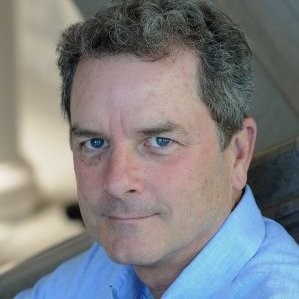
Paul Hughen
Paul Hughen, ASC is a Director of Photography whose recent work includes 2nd-unit cinematography for WandaVision, Westworld, Birds of Prey, Godzilla: King of the Monsters, and Avengers: Endgame.
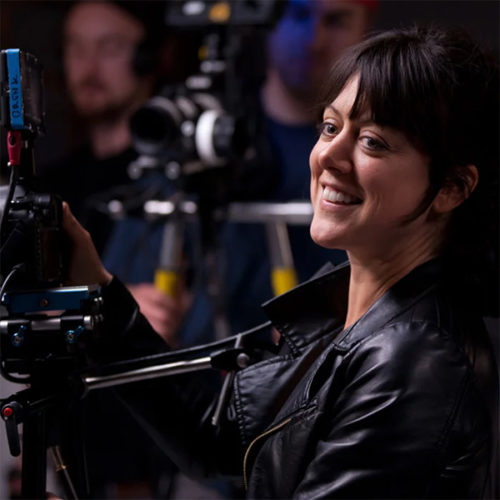
Polly Morgan
Director of Photography Polly Morgan was born in London and, after working as a Camera Assistant for many years in the UK and Canada, Polly attended AFI (American Film Institute) in 2008, completing a Masters in Cinematography.
Soon after graduating, Polly began shooting independent features that garnered acclaim at festivals such as Sundance, SXSW, and Tribeca, before branching into television in both the UK and America. She has shot on series including American Horror Story, Strange Angel, Call The Midwife and Legion.
Named an ASC Rising Star in 2012, Polly has since become one of the youngest members to join the BSC and was named as one of Variety’s “Ten Cinematographers to Watch” in 2016.
In 2018, Polly shot Noah Hawley’s Directorial debut for Fox Searchlight, Lucy In the Sky with Natalie Portman, and become one of the youngest members of the ASC. She is the only female ever to be both an ASC and BSC member.
Polly’s cinematography work has been featured in British Cinematographer, American Cinematographer Magazine, B&H Photo Video’s Women of Influence, IBC, Randi Altman’s postPerspective, IndieWire, Fansided, Pushing Pixels, Awards Watch, The Hollywood Reporter, Variety, Backstage, Cnet, The LA Times, Teen Vogue, and The Wrap.
Polly recently wrapped shooting the sequel to A Quiet Place for Paramount Pictures. She is repped by Gersh.

Chris Seager
Chris Seager BSC is an international award-winning British Cinematographer. With a raft of wins, nominations and two British Academy awards to his name he works predominantly on high-end television drama (Carnival Row [Series1&2], Watchmen, Game of Thrones, The Alienist, The White Princess) and feature films (Six Minutes to Midnight, A Kind of Murder, Set Fire to the Stars, The Merry Gentleman, White Noise, The Walker, New in Town, Beautiful Thing and Fever Pitch).
He has worked alongside industry heavyweight Directors such as John Schlesinger, David Yates, Paul Schrader, and Michael Keaton, having shot Keaton’s directorial debut feature, The Merry Gentleman. Chris has successfully collaborated recently with talented Directors Andy Goddard, Jamie Payne and Thor Freudenthal.
This year Chris has been in Prague shooting Carnival Row [Series 2], Amazon’s dark fantasy show starring Orlando Bloom and Cara Delevingne.
References
- 1THR Staff. "Hollywood Salaries Revealed, From Movie Stars to Agents (and Even Their Assistants)". The Hollywood Reporter. published: October 2, 2014. retrieved on: April 13, 2020
- 2Various Authors. "Digital Cinematography". Wikipedia. published: 2021. retrieved on: 30 July 2021
- 3Ohlheiser, Abby. "Most of America's Silent Films Are Lost Forever". The Atlantic. published: 4 December 2013. retrieved on: 30 July 2021
- 4The Playlist Staff. "15 Cinematographers Turned Directors". Indiewire. published: 17 April 2014. retrieved on: 30 July 2021
